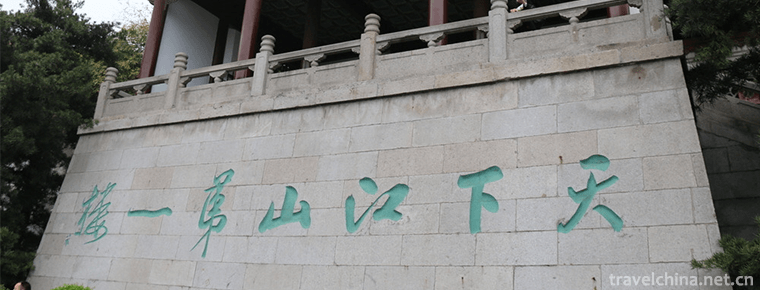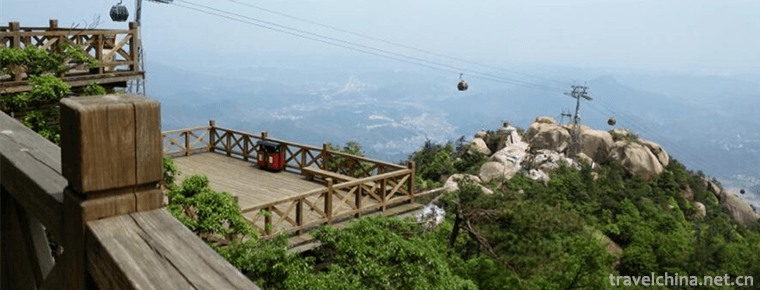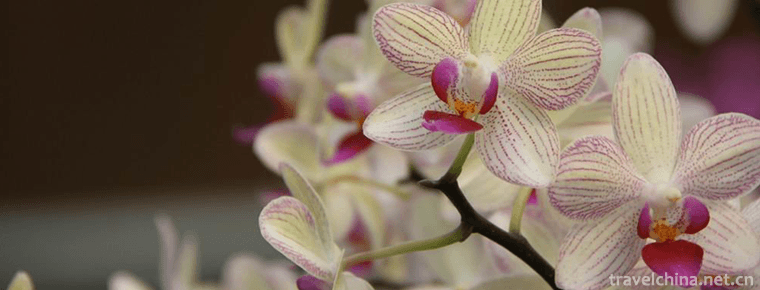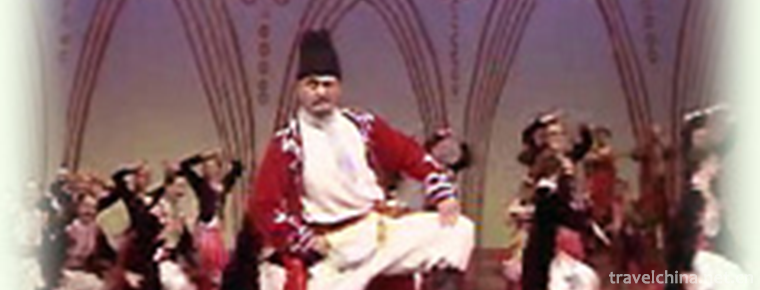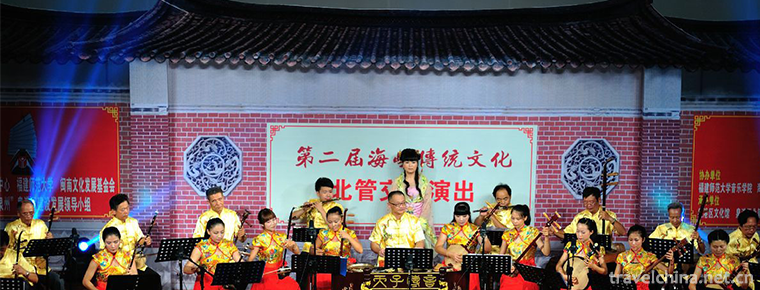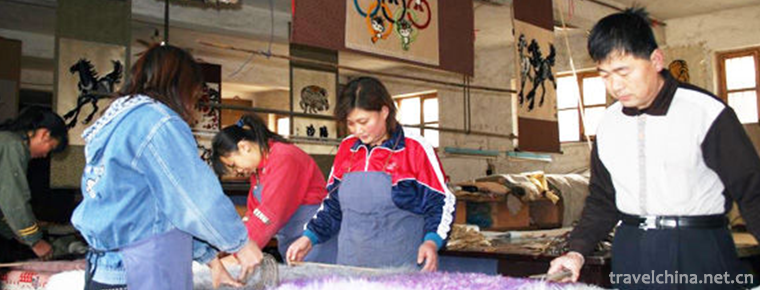The Story of Guangchan Marquis
The Story of Guangchan Marquis
The story of Guangchan Marquis refers to a local folklore widely circulated in Yangcheng County, Jincheng City. Guangchan Marquis refers to an ordinary folk veterinarian in the Northern Song Dynasty. Changshun, a villager in Shantou, Yangcheng County, was awarded the title of "Guangchan Marquis" by Huizong of the Song Dynasty for his meritorious treatment of the Song army's warhorses. According to the experts concerned, Changshun is not only the highest veterinarian in the history of our country, but also the highest veterinarian in the world. In Yangcheng County, there is still a local village memorial site "Shuichao Temple", and Changshun is also respected by villagers as "Shuichao Ye".
The story of Guangchan Marquis has been identified as Shanxi's intangible cultural heritage in 2009, and the "Guangchan Marquis" has been recognized as the highest veterinarian in Chinese history and the only veterinarian marquis to be admired.
In November 2014, the story of Guangchan Marquis was identified by the Ministry of Culture as the fourth batch of representative projects of national intangible cultural heritage.
Historical allusions
In Shantou Village, northeast of Yangcheng County, Jincheng, there has been such a legend: in the four years of Zhenghe in the Northern Song Dynasty (1114 A.D.), Agu of Jin Taizu fought with Song soldiers in Pingyang, which lasted for more than a year. It was rainy and cloudy, and the Song army was prevalent with horse plague. Song would visit Chang Ban Village, Yangcheng County, Shantou Village, Fengcheng Town, Shanshun, Shantou Village, Shanxi Province. Changshun saw the Song army's warhorses in a trance, covered with white and gray patches, some running and running in panic and hoarsing, and some throwing their tails and hitting their heads and necks. Changshun diagnoses that the warhorse is suffering from "Ethnic Earthworm" disease, that is, the present scale disease, which belongs to parasitic disease.
After diagnosing the disease, he said with certainty: "This disease is rare and prevalent once in decades. Once it happens, it will be like a tiger, like wind and fire. If it is not cured in time, it will die in groups. It needs to use strong Stellera chamaejasme and other herbal formulas of 56 flavours to attack poison with poison, and then it can be cured." At this time, there are more than 10,000 sick horses, which need to be treated as soon as possible. If there are no sick horses, they need to be prevented from infection. If the traditional method is used for external application, it may be slow and not urgent. In a hurry, Changshun pours all the boiled herbs into the river, turns the river water into medicine soup, and then drives the non-infectious horses to take a bath in the river, followed by the diseased horses to take a bath and drink once a day. A few days later, the Grey Spot fell off and the horse recovered. Subsequently, the Song Army revived its flag and drum and took advantage of the situation to send troops and win the battle.
Song will return to Beijing and report Changshun's cure to the emperor. Zhao You, the emperor of Huizong in Song Dynasty, immediately decreed that Changshun should be crowned as a Canton Chan Hou, and gave him golden crown, Python robe and jade belt for his meritorious service. He also sent his imperial minister to Yangcheng Shantou Village with the decree and royal wine to offer condolences to Changshun. After Changshun became a marquis, he was not proud of his merits, but more approachable. He hung the python jade belt behind the door, still wore coarse cloth shoes to run for the masses of medical and animal, braved the cold and frost snow, the fierce weather, 365 days a year, no day of leisure.
In 1234, the Emperor Taizong of Yuan Dynasty destroyed the Jin Dynasty in Wokuotai and Song Dynasty. The following year, Taizong Weifu visited Taihang privately and learned that Changshun had cured the warhorses of the Song Army with his superb medical skills and was empowered by Guangchan Marquis for his outstanding achievements in resisting the Jin Dynasty. He was deeply moved. He immediately issued the decree that "Water and Grass Temple should be built for Guangchan Marquis in Shantou Village, statues should be statues, two sacrifices in Spring and Autumn Period, and worship ceremonies should be revered."
Memorial site
Shuicao Temple was built in 1235 (seven years of Taizong) and has a history of nearly 800 years. Changshun, a Buddhist monk of Guang Zen, is respected as "Shuicao Ye". In the past, there was a verdant old cypress on the east side of the temple. Its trunk was tall and straight, its crown was thin and long. Locals thought it was the magic pen of "Shuicao Ye" who used to make prescriptions for dispensing medicines smoothly.
When the Shuicao temple was very popular, people came to burn incense and worship incense spontaneously in Shanxi, Hebei, Shaanxi, Jiangsu, Shandong and other places every year on the seventh day of the Qingming Dynasty and the seventh month of the lunar calendar. When the people who attend the sacrifice walk to the Black Tiger Temple 500 meters in front of the temple gate (equivalent to the guardian God of Guangchan Marquis), they have to "civilian officers get off their sedan chairs, military officers get off their horses, and people take off their shoes". The procession moves slowly. After the officials of various states and counties worship the sacrifices, ordinary people follow the sacrifice.
Shantou Village is located 1.5 kilometers northeast of Yangcheng County. Because of the expansion of the city scale year after year, it has been integrated with the county. The south of Shantou Village is Taiyue Road. Out of the village north, a sheep's intestine path bends down to the bottom of the depression and goes straight to the temple gate.
There is also a wild leek growing in and around the temples and courtyards. Legend has it that this kind of "divine grass" grew in the corrugated ridge of the temple, and the water plant master used it to feed horses. After eating, the horse's fur is smooth and fragrant.
About twenty meters south-west of the temple, there is also an ancient well. According to legend, Guang Chan Hou once drank horses here, and villagers had been eating this well water two years ago before Shantou Village had tap water. In the early years, the well water was always at the same level with the well edge. Villagers went to school and played in the temple. When they were thirsty, they ran to the well head and put their mouths together to sip two wells to quench their thirst. There was also a hay stick near the well, which was like stick grass. Villagers said that it was Shuichao Ye who treated the horses with a tall worship hall in the temple that was situated on the stone steps in the middle of the courtyard, with carved beams and painted pillars, and the words "Twenty-Four Years of Qing Jiaqing" written on the beams were clearly distinguishable.
The Shuicao temple has become a dangerous house because of its disrepair. The more intact temples are worship halls, mountain gates and stage. The rest of the "Guangchan Marquis" halls, East-West chambers, Zen houses, East-West bridges and so on have been destroyed in the war years. Behind the temple there are three cave-style horse houses of unknown age, which have collapsed. According to the people who visit the temple, most of the relics in the temple are destroyed and stolen. In recent years, after the Shuicao temple was re-valued, people began to collect some incomplete stone tablets which recorded the history of Shuicao temple, together with cultural relics such as Chang's family tombstone, which were piled up in a small Buddhist hall in the village. The discovery of Shuicaomiao is of great value to excavate and carry forward the history of Chinese veterinary medicine.
artistic works
The story of "Guang Chan Hou" has also become the theme of literary creation, which is reflected in drama and fiction.
In 1987 and 1994, two national symposiums on Canton Chan Hou were held in Yangcheng and Jincheng successively; in 1987, the Shangdang Bangzi drama "Canton Chan Hou" rehearsed by Yangcheng County People's Theatre Troupe was performed; thereafter, the TV series "Canton Chan Hou Legend" produced by expert Pan Xiaopu and Shanxi TV station was popular throughout the province; in 1992, the historical novel "Veterinary Canton Chan Hou" by Pan Xiaopu was published. Edition.
Although Shuicao Temple, a key cultural relic protection unit at the municipal level, had undergone many renovations, repairs and repairs during the Yuan, Ming and Qing Dynasties and until the Republic of China, it had no choice but to go on for a long time and suffered from the double looting of war and the "Cultural Revolution" in modern times, reaching the point of urgent need for rescue.
Protection status
Since 1981, Shanxi Provincial Cultural Relics Department and Yangcheng County Government have invited experts from Beijing Agricultural University and Veterinary Research Society of Chinese Society of Animal Husbandry and Veterinary Medicine to conduct multiple textual research. It has been proved that Shantou Village of Fengcheng Town in Yangcheng County is the home of Changshun, the "Guangchan Marquis", and Shuicao Temple of Shantou Village is the only ancient official-built veterinary temple building found today.
In 2009, "Guangchan Marquis Stories and Legends" was established as the second batch of intangible cultural heritage projects in Shanxi Province. In August 2010, the people's government of Fengcheng Town reported to the Cultural Relics Bureau of Yangcheng County "An Invitation for the Restoration of Watergrass Temple in Guangchan Marquis in Shantou Village";
In December 2010, the Yangcheng County Cultural Relics Bureau submitted to the Municipal Tourism and Cultural Relics Bureau an "Request for Report and Examination of the Design Plan for the Protection and Renovation of Shantou Water and Grass Temple";
In January 2011, the Municipal Administration of Tourism and Cultural Relics wrote back and issued the Evaluation Opinions on the Design Plan of the Protection and Renovation Project of Shantou Waterfront Herb Temple. So far, the restoration project of Shuichao Temple has officially begun.
On March 10, 2011, the relevant departments of Yangcheng County decided to invest in the restoration of the original site of Shuichao Temple, a temple commemorating the ancient Chinese veterinarian, Guangchan Marquis.


-
Huanghelou Park Wuhan
Wuhan Yellow Crane Tower Park: The Yellow Crane Tower on Snake Mountain in Wuchang is one of the three famous buildings in the south of the Yangtze River..
Views: 158 Time 2018-12-12 -
Shangrao Lingshan Scenic Area
Shangraolingshan Scenic Area, located in the north of Shangrao County, Shangrao City, Jiangxi Province, is a national scenic spot with an area of 160 square kilometers. Lingshan is listed as the ".
Views: 119 Time 2018-12-19 -
Taining World Geological Park Fujian Province
Fujian Taining World Geological Park, located in Taining County, Sanming City, northwest Fujian Province, covers an area of 492.5 square kilometers, of which Danxia landform.
Views: 148 Time 2019-02-13 -
Yanling National Flower and Tree Expo Park
Yanling National Flower and Tree Expo Park (Yanling Flower and Tree Expo Park) is located in the eastern part of Xuchang City, Henan Province..
Views: 109 Time 2019-02-28 -
Nazikum
Nazikum is a folk dance performance that combines instrumental performance, competitive performance, mime performance and rap. The unique squatting dance is the leading style in Uygur folk songs and d.
Views: 141 Time 2019-06-07 -
Quanzhou North Pipe
Beiguan, also known as Beiqu, Xiaoqu, Quzi, is a kind of traditional folk silk and bamboo music widely spread in Quangang District, Quanzhou City, Fujian Province. China's Beiguan is now only distribu.
Views: 205 Time 2019-06-11 -
Tanning Technology of Tan Sheepskin
Tanning process of Tan sheepskin in Jiaocheng County is relatively complex, totally depending on manual operation. There are more than 20 processes such as washing, soaking, drying, shoveling, nailing.
Views: 261 Time 2019-06-18 -
Wudang Shenju
Wudang Shenxi Opera is a kind of traditional opera in Xijiadian Town, Danjiangkou City, Hubei Province. It has a history of nearly 400 years since the Wang family absorbed Wudang culture and the music.
Views: 325 Time 2019-06-30 -
Chengdu Normal University
Chengdu Teachers College is an undergraduate teacher's college in Sichuan Province, which is a pilot University for the overall transformation of Sichuan's comprehensive reform. The school's predecess.
Views: 320 Time 2019-08-31 -
Longhua Baxian Mountain Giant Buddha
Longhua Baxian Mountain Giant Buddha is located in Baxian, Longhua Town, Pingshan County, Yibin City, Sichuan Province. Since the Bamiyan Buddha in Afghanistan was bombed by the Taliban.
Views: 301 Time 2020-10-16 -
Guangan location
Guang'an City is located in the east of Sichuan Province, with the geographical coordinates of 30 ° 01 ′ - 30 ° 52 ′ n, 105 ° 56 ′ - 107 ° 19 ′ e, 134.5 km from east to west, 93.6 km from north to south, from Linshui county to Dazhu County of Dazhou City, from.
Views: 359 Time 2020-12-19 -
Dazhou culture
Baqu culture refers to the fact that Dazhou city is located in Bashan canal and belongs to Badi in ancient times. The chapter of Baqu customs is listed in the ancient book Taiping Huanyu Ji thousands of years ago; the second refers to the unique cultur.
Views: 365 Time 2020-12-20
